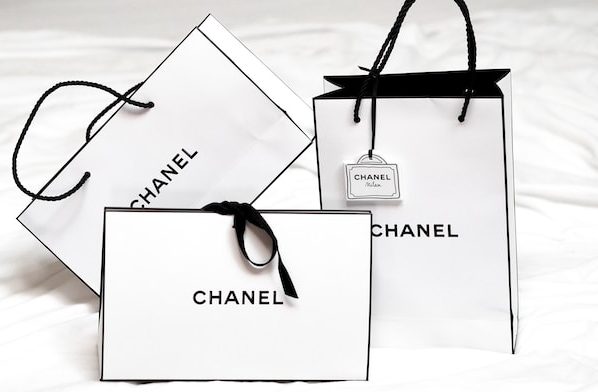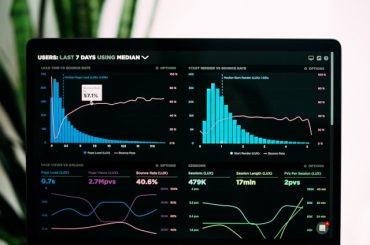Before we dive deep into the SWOT analysis, let’s get the business overview of Chanel. Chanel is a private company and a luxury brand that primarily operates in the fashion industry. The company is renowned for its high-quality products, ranging from haute couture clothing, ready-to-wear clothes, luxury goods, and fashion accessories to beauty products and fragrances.
The company was established in 1910 by Gabrielle “Coco” Chanel in Paris, France. It has since grown to become one of the most prestigious fashion houses in the world. The iconic “little black dress,” the Chanel No. 5 perfume, and the classic Chanel suit are among its most famous creations.
Chanel operates in several sectors:
- Fashion: This includes both haute couture, which involves creating exclusive custom-fitted clothing, and prêt-à-porter, or ready-to-wear collections. Their fashion lines are showcased in major fashion weeks across the globe, especially Paris Fashion Week.
- Beauty: This sector includes producing and selling cosmetics, skincare products, and fragrances. The Chanel No. 5 perfume, released in 1921, remains one of the best-selling perfumes of all time.
- Accessories: This includes a wide range of products, such as handbags, shoes, eyewear, jewelry, and watches. Chanel’s quilted leather handbags, with their distinctive chain straps, are globally recognized as a symbol of luxury and sophistication.
- Watches and Fine Jewelry: Chanel also operates in the high-end jewelry and watch sector, producing items often crafted with precious metals and gemstones.
Building a Legacy: Chanel’s Luxury Marketing Strategy
Chanel’s business model is based on selling through boutiques owned directly by the brand (vertical integration), high-end department stores, and their official website. As of 2023, Chanel had not engaged in franchising, maintaining control over its product quality, brand image, and distribution channels.
The company’s strategic decisions and financials are closely guarded, given its status as a private company. However, Chanel has consistently demonstrated resilience and growth in the luxury market.
Financial Performance:
- 2022 financial results driven by strong client demand across all product lines, reaffirming the desirability of Chanel’s creations
- Revenues of $17.2 billion, up 17% versus 2021 on a comparable basis at constant currency.
- Operating profit of $5,776 million, an increase of 5.8% compared to 2021.
- Capital expenditure at $668 million, representing 3.9% of sales.
- Free cash flow of $3,534 million
Here is the SWOT analysis of Chanel
A SWOT analysis is a strategic planning tool used to evaluate the Strengths, Weaknesses, Opportunities, and Threats of a business, project, or individual. It involves identifying the internal and external factors that can affect a venture’s success or failure and analyzing them to develop a strategic plan. In this article, we do a SWOT Analysis of Chanel.
SWOT Analysis: Meaning, Importance, and Examples
Strengths
- Brand Reputation and Heritage: Chanel is a globally recognized brand synonymous with luxury, elegance, and quality. Its rich history and heritage, associated with founder Coco Chanel, add significant value and prestige to the brand.
- Product Quality: Chanel is committed to the highest standards of quality and craftsmanship in all its products, from fashion and accessories to cosmetics and perfumes. This emphasis on quality ensures customer satisfaction and loyalty.
- Unique Designs: Chanel is known for its innovative and distinctive designs. The brand has a unique style that is easily recognizable, which gives it a competitive edge in the fashion industry. Signature designs like the little black dress, the Chanel Suit, and the quilted handbags have stood the test of time and continue to be popular.
- Controlled Distribution Channels: Chanel’s choice to sell its products only in its boutiques and selected high-end department stores, as well as on its own website, ensures control over its product presentation and customer experience. This strategy maintains the brand’s exclusivity and luxury image.
- Diverse Product Range: Chanel’s wide product range, including apparel, accessories, beauty, and fragrances, allows it to cater to different market segments and customer needs. This product diversity also helps mitigate risks associated with reliance on a single product category.
- Celebrity Endorsements: Chanel has a history of successful collaborations with high-profile film, music, and fashion celebrities. These partnerships help maintain the brand’s allure, reach a wider audience, and boost sales.
- Global Presence: Chanel has a broad geographical reach with boutiques in key fashion cities worldwide. This international presence helps it cater to a global customer base and insulates it from regional economic fluctuations.
- Innovation and R&D: In areas like cosmetics and skincare, Chanel invests in research and development to create products that align with consumer trends and needs. This helps the brand stay relevant and competitive.
Weaknesses
- High Price Points: Chanel’s products are renowned for their quality and luxury, which come at high prices. This pricing strategy makes the brand inaccessible to a large segment of potential customers and highly dependent on the purchasing power of high-income consumers.
- Limited Accessibility: Chanel’s distribution strategy, which relies on exclusive boutiques and selected department stores, maintains the brand’s luxury image. However, this limited accessibility might deter potential customers who prefer more convenient purchasing options, such as online shopping or widely available retail outlets.
- Dependence on the Luxury Market: Chanel’s business is strongly tied to the luxury market, which can be sensitive to economic fluctuations. In times of economic downturn, luxury goods are typically among the first expenditures consumers cut back on, which can impact the company’s revenues.
- Less Aggressive Online Presence: While Chanel has strengthened its online presence, it still lags behind competitors who have embraced e-commerce more fully. This could be seen as a missed opportunity in an increasingly digital age.
- Imitation and Counterfeit Products: Like many luxury brands, the Chanel brand faces the challenge of counterfeit products. Imitations can damage the brand’s reputation and result in significant financial losses.
- Limited Consumer Engagement: Chanel maintains a more traditional and somewhat reserved approach than other luxury brands with more dynamic and interactive marketing strategies. This could limit opportunities for customer engagement, particularly among younger, digitally-savvy consumers.
- Slow to Adopt Sustainable Practices: The fashion industry has been facing increasing scrutiny regarding its environmental impact and sustainability practices. While Chanel has made some moves towards sustainability, it has been criticized for not acting quickly or comprehensively enough in this area.
Opportunities
- E-Commerce Expansion: As of 2021, Chanel had been slower than some competitors in fully embracing e-commerce. As more consumers turn to online shopping, particularly after the COVID-19 pandemic, there’s a significant opportunity for Chanel to expand its digital footprint and offer more products online.
- Sustainability and Ethical Fashion: There is a growing consumer demand for environmentally friendly and ethically made products. Chanel could capitalize on this trend by enhancing its sustainability practices and transparently communicating its progress.
- Emerging Markets: Emerging markets like China, India, and other Asian countries are experiencing rising wealth and increased demand for luxury goods. These markets offer a promising opportunity for Chanel to expand its consumer base.
- Millennial and Gen Z Consumers: Younger consumers represent a significant potential market for luxury goods. Chanel could tailor its marketing strategy to appeal more directly to these demographics, leveraging social media platforms and influencers more effectively.
- Diversification: While Chanel already has a wide product range, there’s always room for further diversification. This could include entering new product categories or expanding into related industries, such as luxury home decor or technology.
- Personalization: With technological advancements, there’s a growing trend for personalized products and shopping experiences. Chanel could capitalize on this by offering more customized services or products to enhance the luxury experience.
- Collaborations and Partnerships: Collaborations with designers, artists, or even brands from other industries (such as tech companies) could offer exciting innovation opportunities and reach new audiences.
Threats
- Economic Uncertainty: Global economic downturns can severely affect the luxury goods market. High-end products are often the first to be impacted when consumers tighten their budgets. Geopolitical tensions and global events like the COVID-19 pandemic also contribute to economic uncertainty.
- Changing Consumer Preferences: Fashion trends and consumer preferences change rapidly, and companies must continually innovate to stay relevant. A failure to adapt to new trends could result in a loss of market share.
- Competition: The luxury goods market is highly competitive, with many established and emerging brands. Staying ahead requires continual innovation, high quality, and effective marketing strategies.
- Counterfeit Products: The rise of counterfeit products is a significant threat to luxury brands like Chanel. These fake products not only lead to financial losses but can also damage the brand’s reputation and dilute its image of exclusivity.
- Regulatory Changes: Trade policy or regulation changes can impact Chanel’s operations, mainly since it is a global brand with supply chains and customers worldwide.
- Sustainability and Ethical Concerns: The fashion industry faces increasing scrutiny regarding its environmental and social impact. Like other brands, Chanel could face backlash if it does not address sustainability concerns effectively.
- Digital Disruption: The rise of digital technology has reshaped the retail landscape. While this presents opportunities, it also poses threats – for example, negative reviews or criticism can spread rapidly on social media and harm the brand’s reputation.
- Dependence on Key Markets: If Chanel relies heavily on sales from specific markets (e.g., China), any economic or political disruptions in those countries could significantly impact its business.









